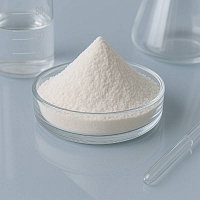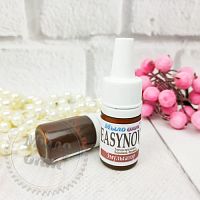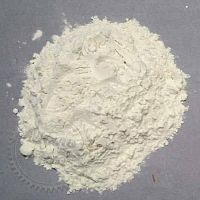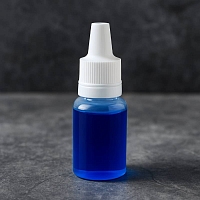-
 Absolutes
Absolutes
-
 Active Complexes
Active Complexes
-
 Actives and Peptides for Cosmetics
Actives and Peptides for Cosmetics
-
 Amino Acids
Amino Acids
-
 Food Flavorings
Food Flavorings
-
 Ayurveda
Ayurveda
-
 Vitamins
Vitamins
-
 Gelling Agents and Thickeners
Gelling Agents and Thickeners
-
 Hydrosols and Floral Waters
Hydrosols and Floral Waters
-
 Hydrolyzed Proteins
Hydrolyzed Proteins
-
 Fragrant and aromatic substances
Fragrant and aromatic substances
-
 Acids, Salts, Alcohols, and Alkalis
Acids, Salts, Alcohols, and Alkalis
-
 Preservatives and Antioxidants
Preservatives and Antioxidants
-
 Cosmetic Raw Materials
Cosmetic Raw Materials
-
 Dyes, Pearlescents, and Glitters
Dyes, Pearlescents, and Glitters
-
 Face Masks, Scrubs, and Dried Flowers
Face Masks, Scrubs, and Dried Flowers
-
 Oils, batters, macerates, oil mixtures
Oils, batters, macerates, oil mixtures
-
 Candle Supplies
Candle Supplies
-
 Melt and Pour Soap Bases
Melt and Pour Soap Bases
-
 Base for cosmetics, cream, serum, shampoo
Base for cosmetics, cream, serum, shampoo
-
 Fragrance Oils
Fragrance Oils
-
 Surfactants
Surfactants
-
 Peelings for Skin
Peelings for Skin
-
 Herbal Powders and Plant
Herbal Powders and Plant
-
 Silicones and Conditioning Surfactants for Hair
Silicones and Conditioning Surfactants for Hair
-
 Raw materials for dietary supplements
Raw materials for dietary supplements
-
 Packaging for Cosmetics and Perfumes
Packaging for Cosmetics and Perfumes
-
 Molds, Packaging, Tools
Molds, Packaging, Tools
-
 Organic Extracts
Organic Extracts
-
 Emollients for Cosmetics
Emollients for Cosmetics
-
 Emulsifiers
Emulsifiers
-
 Essential Oils
Essential Oils
Agar-Agar 1100: The Natural Gelling Powerhouse for Culinary and Cosmetic Creations
Discover the versatile potential of Agar-Agar 1100, a premium gelling agent proudly sourced from Germany. This fine white to cream-colored powder, derived from red algae (Gelidiaceae), is your go-to ingredient for achieving remarkable textures in both culinary delights and innovative cosmetic formulations. Known for its strong gelling capabilities and excellent solubility in hot water (from 95°C), Agar-Agar 1100 offers a natural, plant-based alternative to traditional thickeners, delivering superior results in a wide array of applications.
Description and Key Features
Agar-Agar 1100 (INCI: Agar) is a natural hydrocolloid extracted from various species of red algae, primarily from the Gelidiaceae family. It's a complex carbohydrate that, when dissolved in hot water and subsequently cooled, forms a firm, stable gel. Its exceptional gelling strength, indicated by the "1100" rating, means a little goes a long way to create desired textures.
Key features and benefits:
- Natural Origin: Sourced from red algae, it's a completely plant-based and vegan-friendly gelling agent, making it an excellent alternative to gelatin.
- Superior Gelling Strength: The "1100" grade signifies high gelling power, allowing for firm gels with a small amount of product.
- Color and Odor: Appears as a fine white to cream-colored powder with a neutral odor, ensuring it won't impact the color or scent of your final product.
- Hot Water Solubility: Dissolves effectively in hot water (from 95°C), making it easy to incorporate into heated formulations.
- Thermo-Reversible: Gels formed with Agar-Agar are thermo-reversible, meaning they can be melted and re-set multiple times without losing their gelling properties.
- Stabilizer and Thickener: Beyond gelling, it acts as an excellent stabilizer and thickener, improving the consistency and shelf-life of various products.
Versatile Applications and Usage Areas
Agar-Agar 1100 is a highly versatile ingredient with extensive applications across various industries, particularly in culinary arts and the creation of innovative cosmetic products. (Note: It is not used for candles.)
In Culinary Arts:
- Vegan Desserts: The most popular use for Agar-Agar is in creating vegan jellies, panna cottas, mousses, and fruit tarts as a gelatin substitute. It sets at room temperature and is heat-stable once set.
- Confectionery: Used in making gummy candies, marshmallows, and various glazes for pastries and cakes, providing a desirable chewy or firm texture.
- Dairy Alternatives: Perfect for thickening plant-based yogurts, custards, and creams, offering a smooth and stable consistency.
- Savory Dishes: Can be used to create savory aspics, terrines, and clear broths, adding structure without altering flavor.
- Preserves and Jams: Enhances the setting of homemade jams and preserves, particularly those with low pectin content.
- Molecular Gastronomy: Employed in advanced culinary techniques to create spheres, gels, and foams with unique textures.
In Cosmetic Formulations:
- Gel-Based Skincare Products:
- Facial Gels & Serums: Creates light, non-greasy textures for hydrating facial gels, eye gels, and serums, delivering active ingredients effectively to the skin.
- Gel Masks: Ideal for peel-off or rinse-off gel masks, offering a pleasant application experience and allowing for deep penetration of beneficial ingredients.
- Body Gels: Forms refreshing and cooling body gels for after-sun care, post-shave, or general hydration.
- Emulsion Stabilizer:
- Creams and Lotions: While primarily a gelling agent, small amounts can be used to stabilize emulsions, preventing separation of oil and water phases, leading to smoother, more consistent products.
- Exfoliants and Scrubs:
- Can be used to suspend exfoliating particles (like jojoba beads or sugar) evenly within a gel base, ensuring a consistent exfoliation experience.
- Hair Care Products:
- Hair Gels: Creates natural-hold hair gels that don't flake or feel sticky, providing definition and shine.
- Hair Masks: Can be incorporated into hair masks to improve consistency and aid in the delivery of nourishing ingredients.
- Natural Cleansers:
- Can be used in gentle gel cleansers for face or body, providing a pleasant texture that rinses clean.
- Toothpastes and Oral Care:
- Acts as a binder and thickening agent in natural toothpastes, contributing to a smooth texture and even dispersion of ingredients.
Cosmetic Recipe: "Aqua Quench" Hydrating Face Gel
Create a refreshing and deeply hydrating face gel using Agar-Agar as your gelling agent, perfect for a lightweight, non-greasy feel.
| Ingredient | Percentage (%) | Function |
|---|---|---|
| Phase A (Aqueous Phase) | ||
| Distilled Water | Up to 100% (approx. 93%) | Base of the gel |
| Glycerin | 3% | Humectant, draws moisture to the skin |
| Agar-Agar 1100 | 0.5% | Natural gelling agent, thickener |
| Phase B (Cool Down Phase - Add below 40°C) | ||
| Panthenol (Vitamin B5) | 1% | Soothes, moisturizes, improves skin elasticity |
| Allantoin | 0.2% | Skin-conditioning, soothing, healing |
| Preservative (e.g., Geogard 221) | 0.8% | Protects against microbial growth |
| Essential Oil/Fragrance (optional) | 0.5% | Adds scent |
Instructions for Preparation:
- Sanitize: Thoroughly sanitize all your equipment (beakers, stirring rods, serum bottles) with isopropyl alcohol and allow them to air dry completely.
- Prepare Phase A (Aqueous Phase): In a heat-resistant beaker, combine distilled water and glycerin.
- Disperse Agar-Agar: Sprinkle Agar-Agar 1100 slowly over the surface of the water-glycerin mixture while whisking constantly to prevent clumping. Let it hydrate for about 5-10 minutes.
- Heat and Dissolve: Gently heat the mixture to at least 95°C (203°F), stirring continuously, until the Agar-Agar is completely dissolved. It should appear clear with no visible particles. Maintain this temperature for a couple of minutes to ensure full dissolution.
- Cool Down: Remove from heat and let the gel cool down to below 40°C (104°F), stirring occasionally to prevent a thick skin from forming on top. The mixture will start to thicken as it cools.
- Add Phase B (Cool Down Phase): Once the gel has cooled to below 40°C, add the Panthenol, Allantoin, preservative, and optional essential oil/fragrance. Stir thoroughly until all ingredients are fully incorporated and the gel is homogeneous.
- Check pH (Recommended): Test the pH of your finished gel. For a face gel, an ideal pH range is typically 5.0-6.0. Adjust if necessary by adding a tiny drop of diluted lactic acid to lower pH or diluted baking soda solution to raise pH.
- Bottle: Carefully transfer the finished gel into a clean, sterile pump bottle or jar. The gel will continue to firm up as it cools completely.
Recommendations for Use:
- Proper Dissolution: The key to using Agar-Agar 1100 is to ensure it reaches the specified high temperature (95°C or above) for complete dissolution. Insufficient heat will result in a lumpy or weak gel.
- Agar-Agar vs. Gelatin: Remember that Agar-Agar creates a firmer, less "bouncy" gel than gelatin. It also sets faster and at room temperature.
- Concentration: The 0.5% concentration in this recipe yields a light, pourable gel. For a firmer gel, you can slightly increase the percentage of Agar-Agar, but generally, not much is needed due to its high gelling strength.
- Cool Down Phase: Always add heat-sensitive ingredients (like most preservatives, essential oils, and many active ingredients) during the cool-down phase, below 40°C, to preserve their efficacy.
- Storage: Store the finished gel in a cool, dark place. The preservative ensures shelf stability.
- Application: Apply a small amount of the gel to clean face and neck, morning and evening, for hydration and a refreshing sensation.
And also go to the Blog from Мыло Опт, where we share useful information about creating the right natural cosmetics
| INCI | Agar | |
| Other | ||
| Color product | white with a cream shade | |
| Features | All information presented on the site is for reference only | |
| Name | Agar-agar 1100 1 kg | |
| Packaging | container for transportation | |
| Packing | package for transportation | |
| Solubility | hot water from 95 degrees | |
| View | fine powder | |
| Valid until | 09.2026 | |
-
Date:5 DecemberAuthor:Людмила, КембриджReviews
Завжди отримую замовлення вчасно, навіть якщо замовляю у святкові дні.









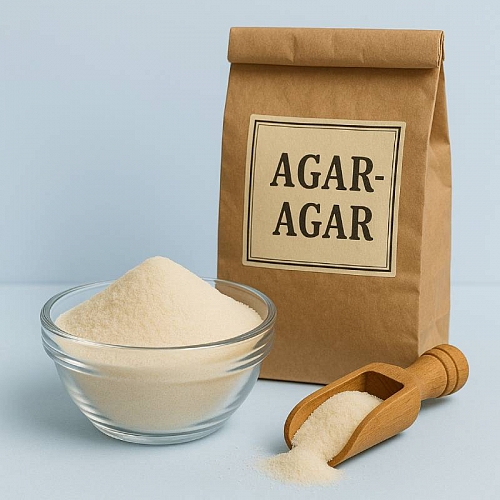
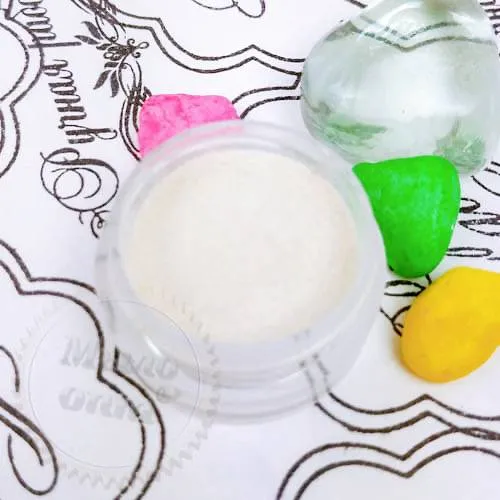


 Add to cart
Add to cart Buy in 1 click
Buy in 1 click

 Add a review
Add a review To favorites
To favorites To compare
To compare





